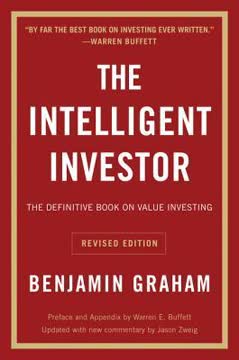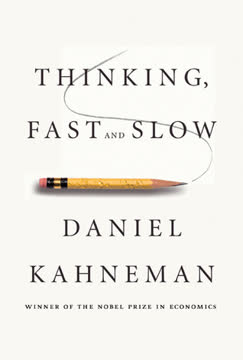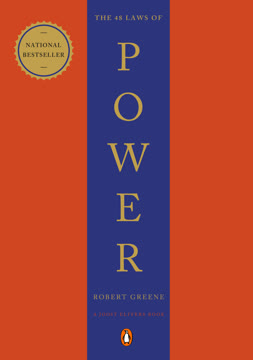重点摘要
1. 定义你的新富生活方式
新富(NR)是那些抛弃延迟生活计划,利用新富的货币:时间和流动性,在当下创造奢华生活方式的人。
拒绝传统退休。 新富专注于在生活中分配“迷你退休”,而不是等待生命的终点。他们优先考虑体验和自由,而不是物质财产。
接受相对收入。 关键不在于你赚了多少钱,而在于你每小时赚了多少以及你有多自由地使用你的时间。一个每年赚4万美元,每周工作10小时的人比一个每年赚10万美元,每周工作80小时的人“更富有”。
优化兴奋感。 不要问“我想要什么?”或“我的目标是什么?”,而是问“什么会让我兴奋?”专注于带来当下快乐和满足的活动和体验。
2. 计算你的目标月收入
定义最糟糕的情况是至关重要的。
进行恐惧设定。 识别你最糟糕的情况,并意识到它们通常没有想象中那么糟糕。这个练习消除了恐惧的瘫痪,促使大胆行动。
确定你的目标月收入(TMI)。 计算你理想生活方式的月成本,包括:
- 住房
- 食物
- 交通
- 娱乐
- 旅行
- 其他个人开支
增加30%的缓冲。 将你计算的TMI增加30%以应对意外开支和储蓄。这成为你努力实现的财务目标。
3. 消除时间浪费者并自动化任务
做好不重要的事情并不使其重要。
应用80/20原则。 识别产生80%期望结果的20%活动。将精力集中在这些高影响任务上,消除或委派其余的任务。
批量处理相似任务。 将相似的活动(如电子邮件、电话、跑腿)分组,并在专门的时间段内执行,以提高效率并减少上下文切换。
实施帕金森定律。 工作会扩展到完成所需的时间。设定激进的截止日期以强制提高生产力并防止不必要的工作。
4. 创建低信息饮食
生活方式设计基于大量行动——输出。增加输出需要减少输入。
实践选择性无知。 有意识地选择要消费的信息。避免低质量的输入,如八卦、新闻和社交媒体,这些对你的目标没有贡献。
制定信息消费策略:
- 每天检查电子邮件1-2次
- 使用RSS阅读器聚合重要内容
- 设定特定时间阅读新闻和社交媒体
- 取消订阅不必要的新闻通讯和通知
专注于可操作的信息。 问自己:“我会立即使用这条信息做一些重要的事情吗?”如果不是,就忽略它。
5. 外包你的生活和业务
如果你不自信,猜猜看?世界上的其他人也是如此。不要高估竞争对手,低估自己。你比你想象的要好。
从小任务开始。 开始外包低风险、耗时的任务,以建立信心并学习过程。例子包括:
- 研究
- 数据输入
- 安排日程
- 旅行计划
使用虚拟助手。 雇佣远程工作者处理个人和专业任务。流行的平台包括:
- Upwork
- Fiverr
- 虚拟助手公司(如Fancy Hands, Time Etc)
创建详细的流程。 为重复任务记录逐步说明,以便轻松委派给他人。
6. 逃离办公室:远程工作策略
忙碌通常被用作避免少数关键但不舒服的行动的借口。
提高你的价值。 在提出远程工作之前,确保你是公司的顶尖表现者和不可或缺的人。
进行远程工作试验。 从每周一天开始,随着你展示生产力逐渐增加。
解决常见反对意见:
- 沟通挑战
- 生产力问题
- 团队协作问题
利用技术。 利用视频会议、项目管理软件和云存储等工具,在远程工作时保持连接和高效。
7. 通过迷你退休设计你的理想生活方式
简单的即兴意愿在长远来看比研究更重要。
重新定义退休。 不要在生命的尽头进行一次长时间的退休,而是在职业生涯中多次进行长时间的休息。
计划战略性迷你退休:
- 持续时间:1-6个月
- 频率:每1-3年
- 地点:探索新的文化和环境
最大化学习和成长。 利用迷你退休获得新技能、语言和体验,提升你的个人和职业生活。
克服常见障碍:
- 财务问题
- 职业影响
- 家庭责任
8. 启动“缪斯”业务以获得被动收入
利用你的优势比试图修复所有盔甲中的缺陷更有利可图和有趣。
识别你的缪斯。 创建一个低维护的业务,产生收入而不需要你持续关注。理想的特征包括:
- 自动化系统
- 外包操作
- 高利润率
- 可扩展模式
专注于信息产品。 考虑创建和销售:
- 电子书
- 在线课程
- 会员网站
- 软件或应用程序
利用你的专业知识。 识别你拥有的有价值技能或知识,并将其打包成可销售的产品或服务。
9. 快速且经济地测试你的商业想法
百分之九十九的人认为他们不能做伟大的事情,所以他们追求平庸。因此,竞争最激烈的是现实的目标。
使用最小可行产品(MVP)。 创建你的产品或服务的基本版本,以测试市场需求,然后再投入大量时间和资源。
采用低成本广告。 利用Google Ads或Facebook Ads等平台测试不同的营销信息和目标受众。
分析关键指标:
- 转化率
- 客户获取成本
- 客户终身价值
快速迭代。 使用反馈和数据快速完善你的产品和商业模式。
10. 从固定地点中解放自己
享受生活,你不需要花哨的东西,但你需要控制你的时间,并意识到大多数事情并不像你想象的那么严重。
接受地理套利。 利用货币差异和较低的生活成本,通过赚取强势货币并在弱势货币中消费来获利。
开发不受地点限制的收入来源。 专注于可以远程管理的业务和职业,如:
- 在线业务
- 自由职业
- 远程工作安排
优化流动性:
- 使用基于云的工具和服务
- 最小化物理财产
- 建立国际联系和资源网络
克服常见挑战:
- 签证和移民问题
- 文化适应
- 维持远距离关系
最后更新日期:
FAQ
What's "The 4-Hour Workweek" by Timothy Ferriss about?
- Lifestyle Design: The book is a guide to escaping the traditional 9-to-5 work model, focusing on creating a lifestyle that prioritizes time and mobility over money.
- New Rich Philosophy: It introduces the concept of the "New Rich" (NR), who value experiences and freedom over accumulating wealth for retirement.
- Practical Strategies: Ferriss provides strategies for automating income, outsourcing tasks, and designing a life that allows for more leisure and personal fulfillment.
Why should I read "The 4-Hour Workweek" by Timothy Ferriss?
- Transformative Approach: It challenges conventional beliefs about work and retirement, offering a new perspective on achieving a balanced life.
- Proven Strategies: Ferriss shares real-world examples and his own experiences, providing actionable advice for financial independence and personal freedom.
- Inspiration and Motivation: The book serves as a source of inspiration for those feeling trapped in traditional work models, encouraging readers to pursue their dreams now.
What are the key takeaways of "The 4-Hour Workweek" by Timothy Ferriss?
- Time and Mobility: Emphasizes the importance of time and mobility as the true currencies of the New Rich, rather than money.
- Elimination and Automation: Introduces concepts to increase productivity and reduce work hours by focusing on high-impact activities.
- Mini-Retirements: Advocates for taking "mini-retirements" throughout life to enjoy experiences without waiting for traditional retirement.
How does Timothy Ferriss define the "New Rich" in "The 4-Hour Workweek"?
- Focus on Experiences: The New Rich prioritize experiences and personal freedom over accumulating wealth for retirement.
- Leveraging Technology: They use technology and outsourcing to create automated income streams, allowing them to work less and live more.
- Breaking Conventional Norms: They challenge traditional norms of work and success, focusing on living in the present.
What is the DEAL framework in "The 4-Hour Workweek" by Timothy Ferriss?
- Definition: The DEAL framework stands for Definition, Elimination, Automation, and Liberation, guiding readers to redesign their lives.
- Elimination: Focuses on removing unnecessary tasks and concentrating on activities that yield significant results.
- Automation and Liberation: Involves creating systems for income generation and achieving location independence for a flexible lifestyle.
How can I apply the 80/20 Principle from "The 4-Hour Workweek" by Timothy Ferriss?
- Identify Key Activities: Recognize the 20% of efforts that produce 80% of results in your work and life.
- Focus on High-Impact Tasks: Prioritize these tasks and delegate or eliminate the rest to achieve more with less effort.
- Continuous Evaluation: Regularly assess activities to maintain high levels of efficiency and effectiveness.
What is "mini-retirement" in "The 4-Hour Workweek" by Timothy Ferriss and how does it work?
- Concept of Mini-Retirement: An alternative to traditional retirement, allowing for extended breaks throughout life to travel and explore.
- Planning and Execution: Requires financial preparation and planning, offering opportunities to experience different cultures and pursue passions.
- Benefits of Mini-Retirements: Helps avoid burnout, gain new perspectives, and enrich life with diverse experiences.
How does outsourcing play a role in "The 4-Hour Workweek" by Timothy Ferriss?
- Delegating Tasks: Emphasizes outsourcing tasks to free up time for high-value activities, increasing productivity and reducing stress.
- Global Resources: Highlights the availability of virtual assistants and global resources to handle tasks at a lower cost.
- Building a Support System: Outsourcing is crucial for achieving the New Rich lifestyle, allowing focus on strategic activities.
How does Ferriss suggest automating income in "The 4-Hour Workweek"?
- Creating a Muse: Develop a low-maintenance business or product that generates passive income, referred to as a "muse."
- Outsourcing Tasks: Delegate repetitive and time-consuming tasks to virtual assistants or specialized companies.
- Testing and Scaling: Start with small tests to validate business ideas, then scale up once a profitable model is established.
How does Ferriss address fear and risk in lifestyle design in "The 4-Hour Workweek"?
- Fear-Setting Exercise: Introduces a "fear-setting" exercise to help confront and manage fears by visualizing worst-case scenarios.
- Reversibility of Decisions: Emphasizes that most decisions are reversible, encouraging calculated risks.
- Focus on Potential Gains: Encourages focusing on potential gains rather than losses to overcome fear and take action.
What are some of the best quotes from "The 4-Hour Workweek" by Timothy Ferriss and what do they mean?
- "What we fear doing most is usually what we most need to do." Highlights the importance of confronting fears for personal growth.
- "The question you should be asking isn’t, 'What do I want?' or 'What are my goals?' but 'What would excite me?'" Encourages pursuing excitement for a fulfilling life.
- "Focus on being productive instead of busy." Stresses prioritizing high-impact tasks over busywork for meaningful results.
How can "The 4-Hour Workweek" by Timothy Ferriss help with work-life balance?
- Redefining Success: Encourages redefining success to include personal fulfillment and leisure, not just career achievements.
- Time Management Techniques: Provides techniques like batching tasks and setting boundaries for effective time management.
- Prioritizing Personal Goals: Focuses on personal goals and experiences to create a more balanced and satisfying life.
评论
《每周工作4小时》评价不一。一些人赞扬其在时间管理、生产力和生活方式设计方面的创新理念,从中找到追求非传统职业道路的灵感。另一些人则批评费里斯的方法不道德、不切实际或过于简化。书中的核心概念包括外包、自动化任务和进行“迷你退休”。虽然许多读者欣赏挑战传统工作规范的推动力,但有些人觉得费里斯的语气令人反感,他的方法也值得怀疑。总体而言,这本书引发了关于工作与生活平衡以及成功的替代方法的讨论。
Similar Books


















